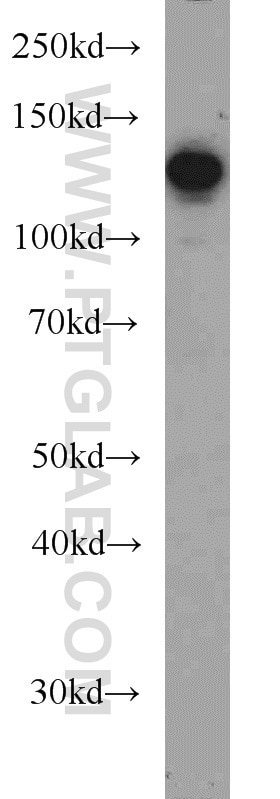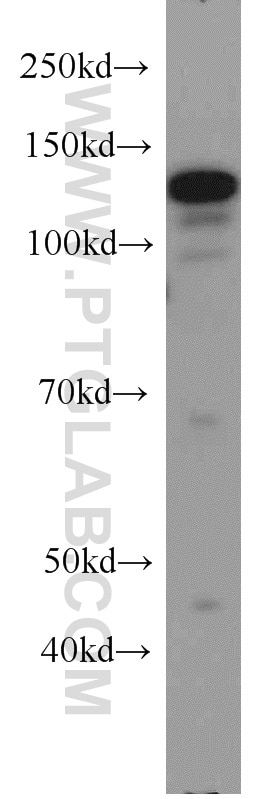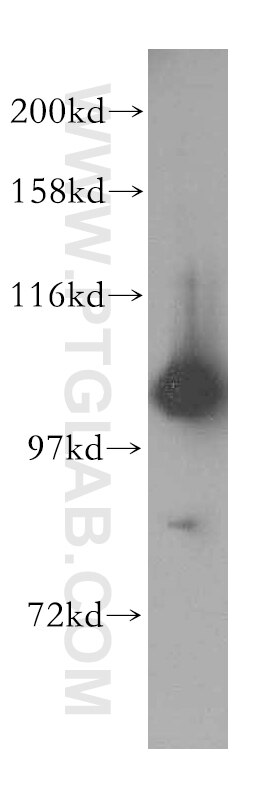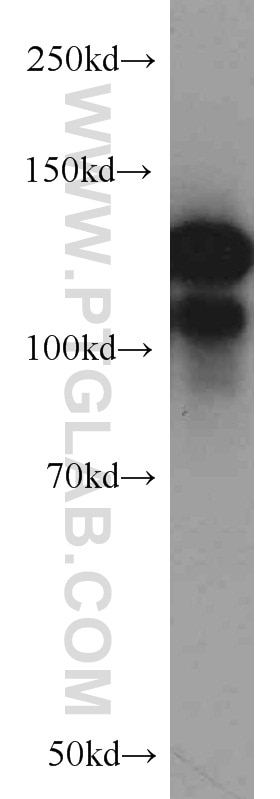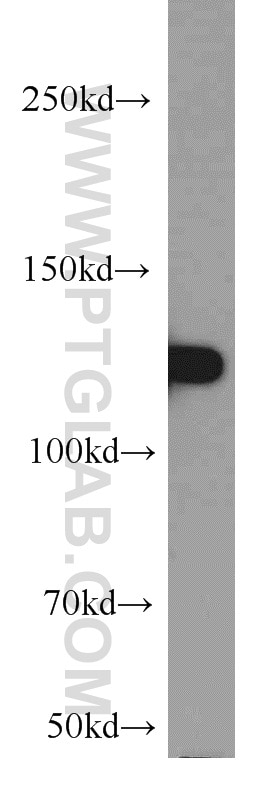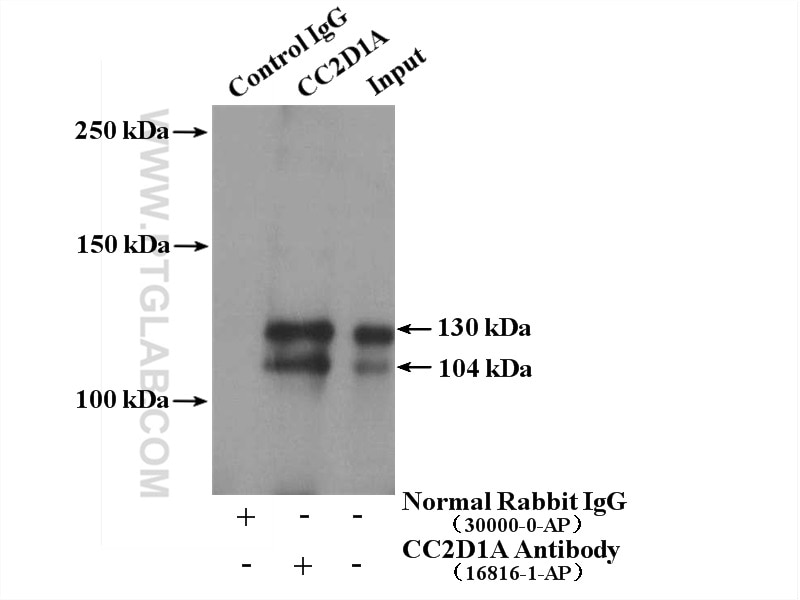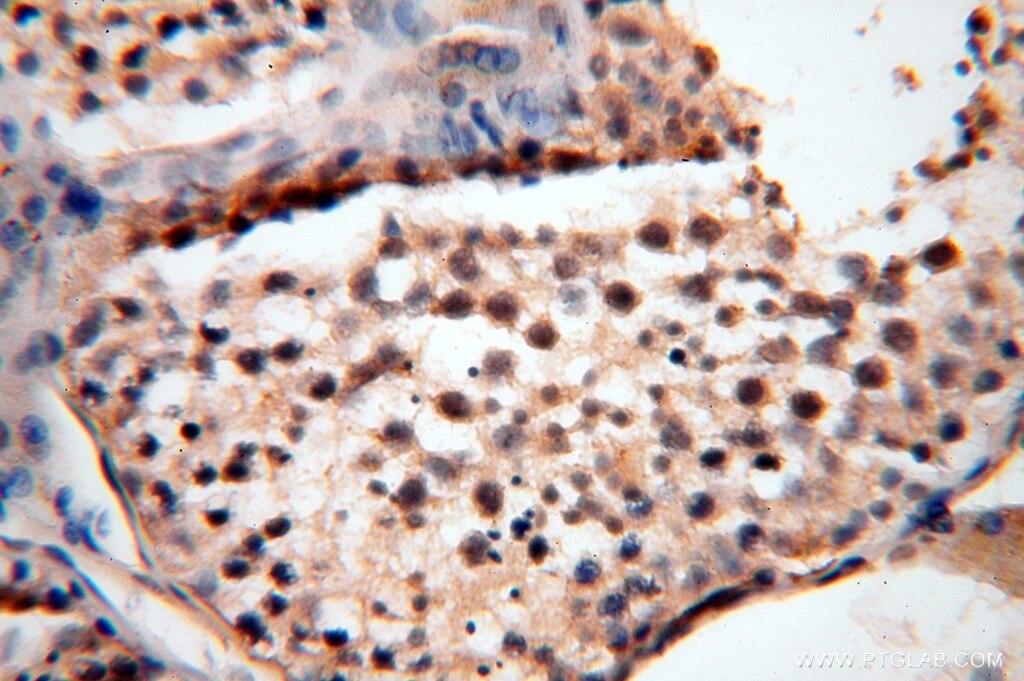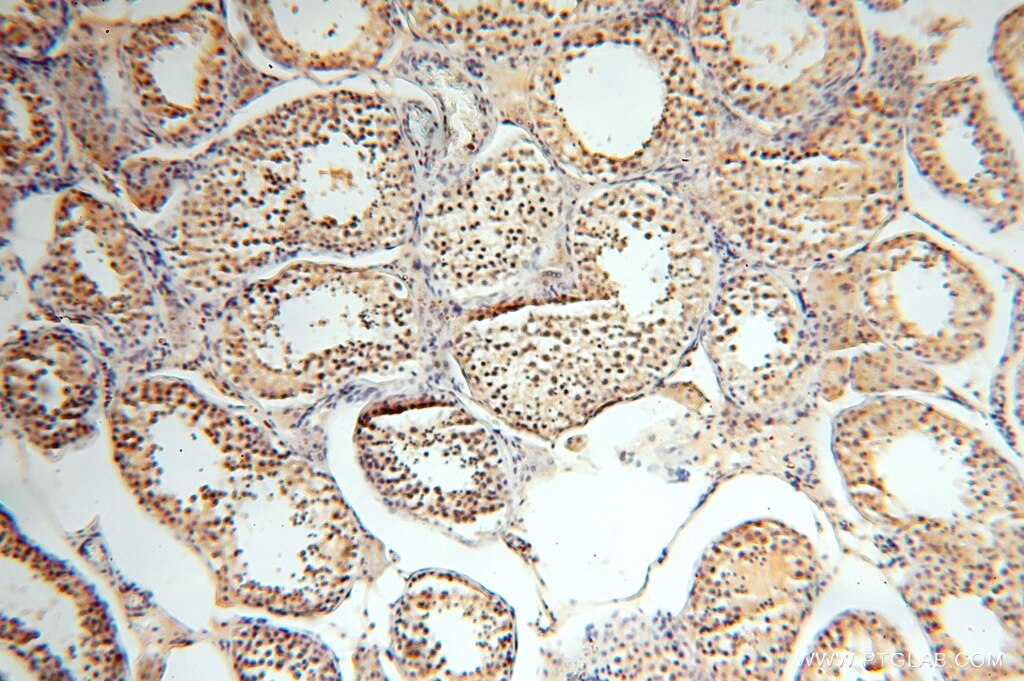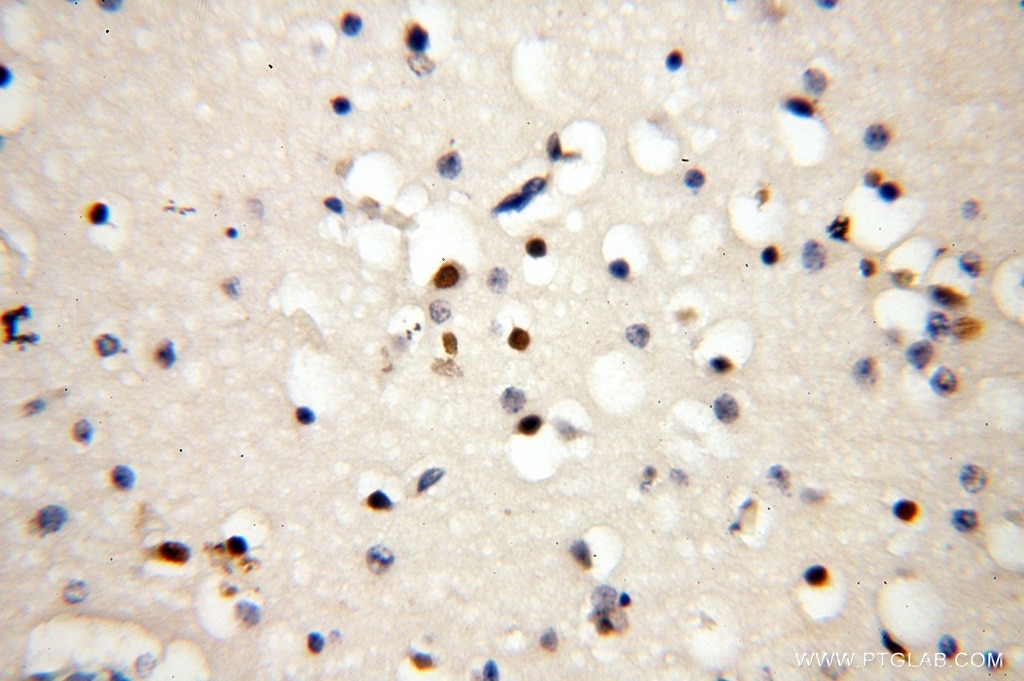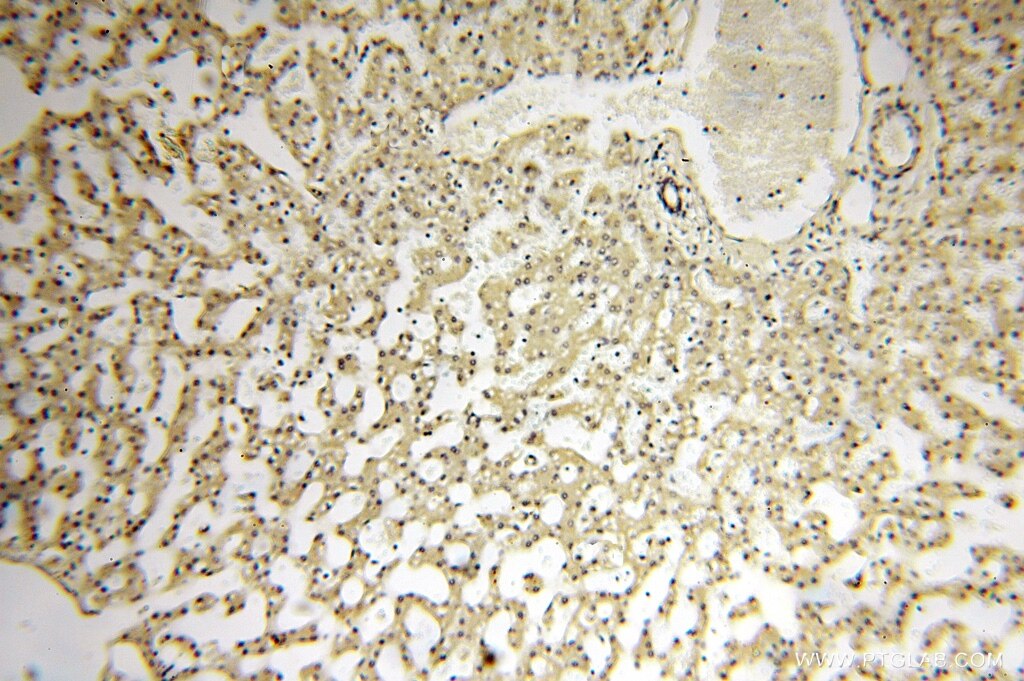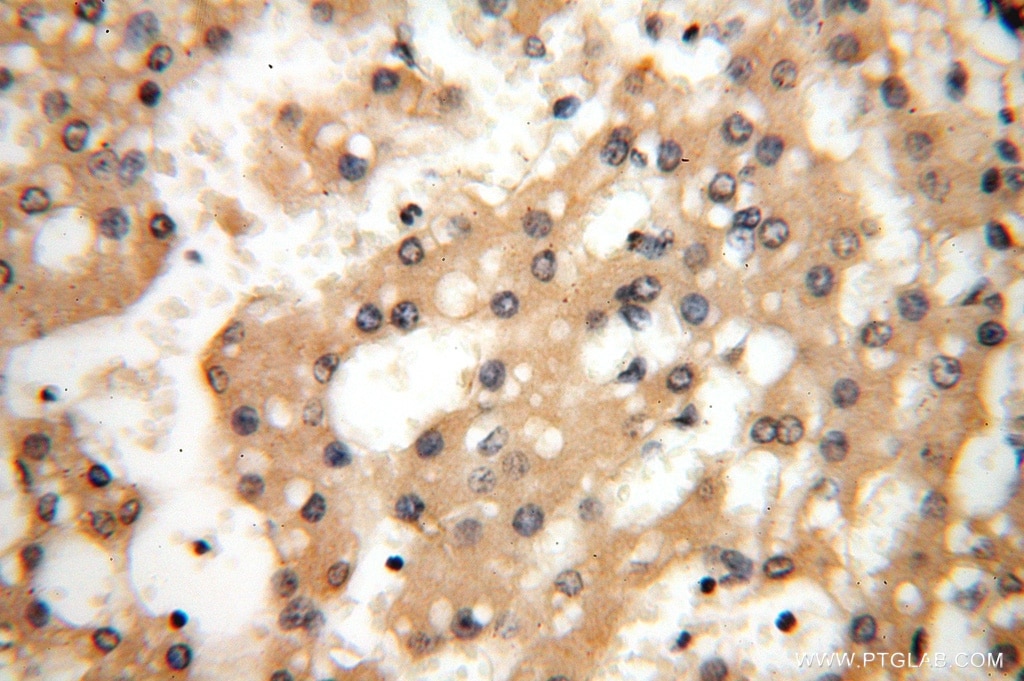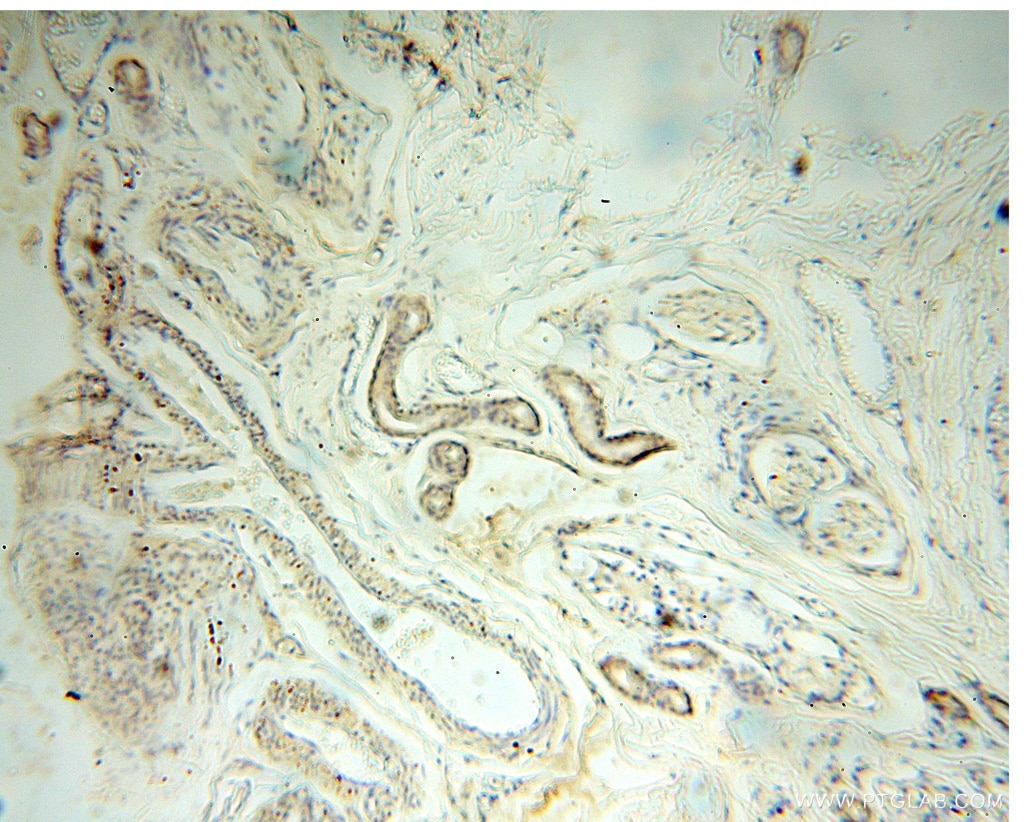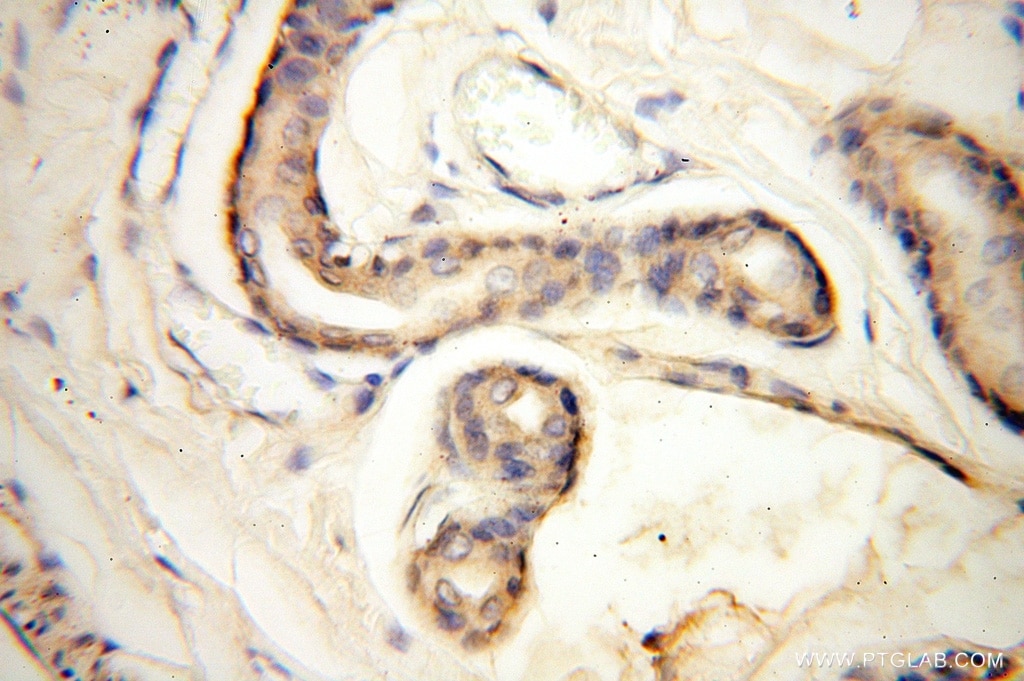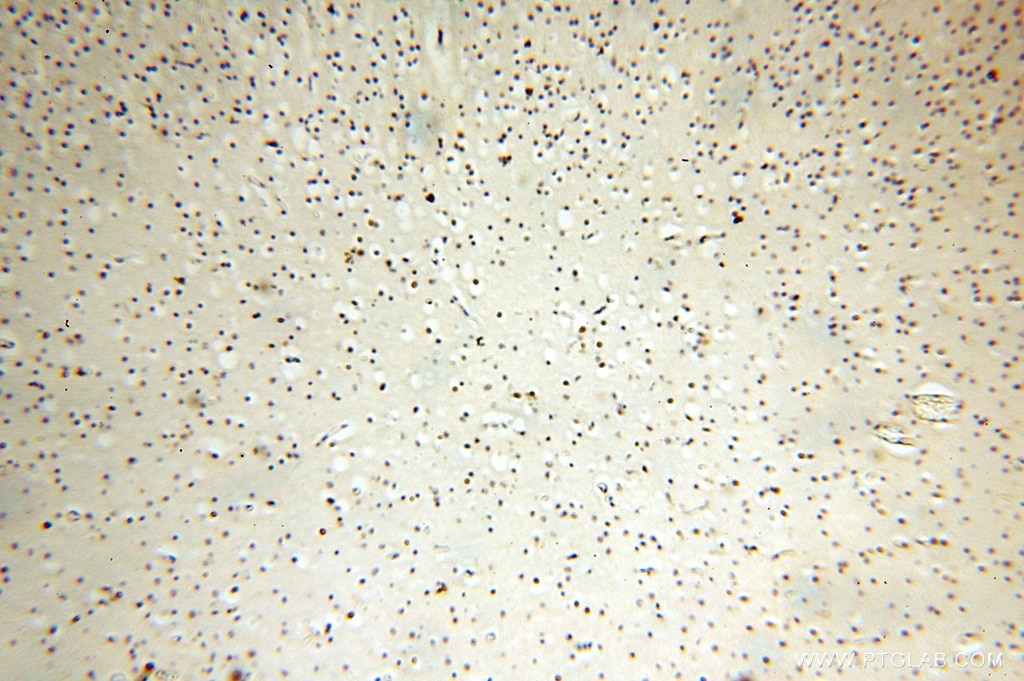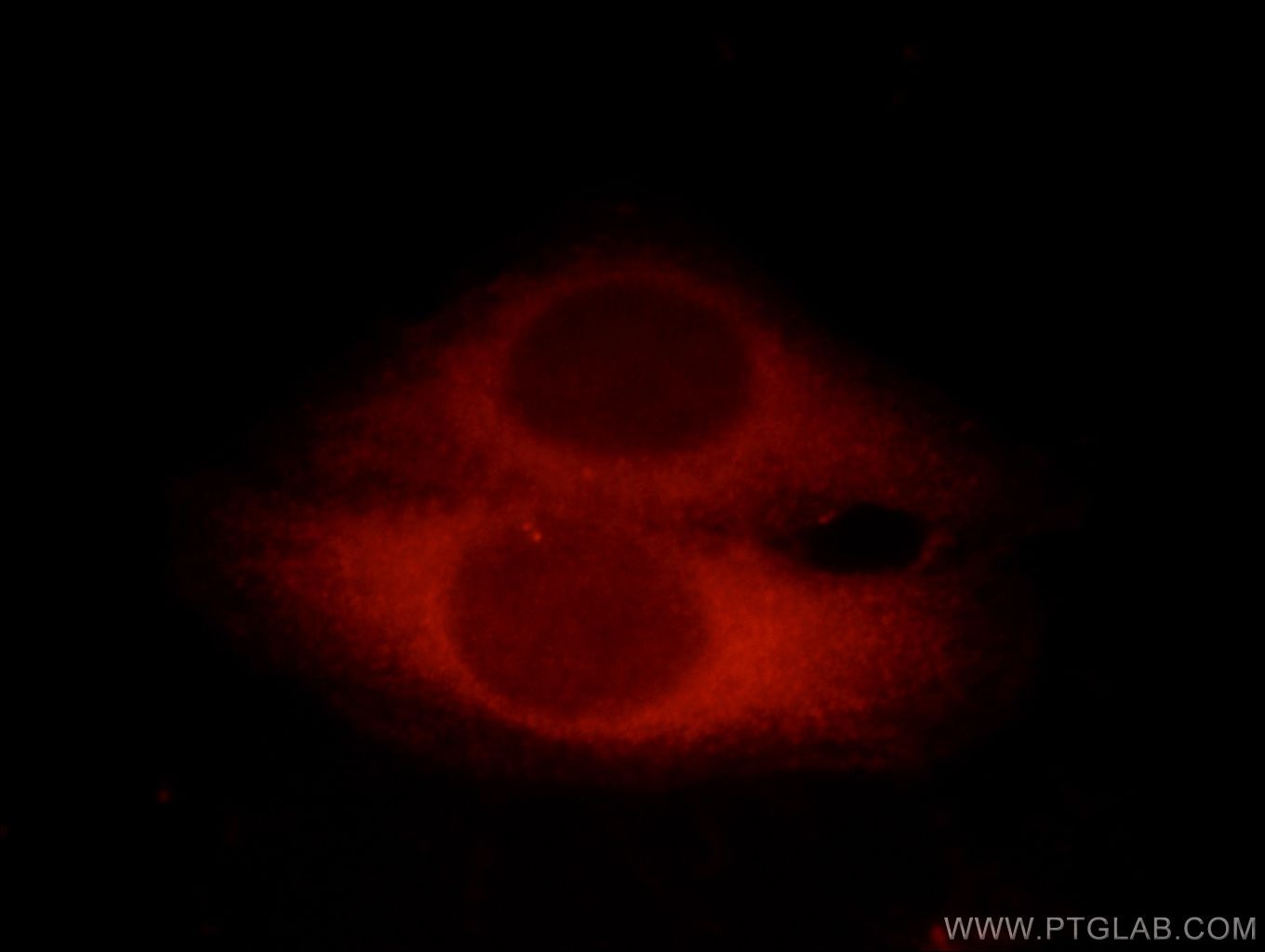- Phare
- Validé par KD/KO
Anticorps Polyclonal de lapin anti-CC2D1A
CC2D1A Polyclonal Antibody for WB, IP, IF, IHC, ELISA
Hôte / Isotype
Lapin / IgG
Réactivité testée
Humain, rat, souris
Applications
WB, IHC, IF/ICC, IP, ELISA
Conjugaison
Non conjugué
N° de cat : 16816-1-AP
Synonymes
Galerie de données de validation
Applications testées
| Résultats positifs en WB | cellules HEK-293, cellules HeLa, cellules Jurkat, tissu hépatique de souris |
| Résultats positifs en IP | tissu hépatique de souris |
| Résultats positifs en IHC | tissu testiculaire humain, tissu cérébral humain, tissu cutané humain, tissu hépatique humain il est suggéré de démasquer l'antigène avec un tampon de TE buffer pH 9.0; (*) À défaut, 'le démasquage de l'antigène peut être 'effectué avec un tampon citrate pH 6,0. |
| Résultats positifs en IF/ICC | cellules HepG2 |
Dilution recommandée
| Application | Dilution |
|---|---|
| Western Blot (WB) | WB : 1:500-1:2000 |
| Immunoprécipitation (IP) | IP : 0.5-4.0 ug for 1.0-3.0 mg of total protein lysate |
| Immunohistochimie (IHC) | IHC : 1:20-1:200 |
| Immunofluorescence (IF)/ICC | IF/ICC : 1:20-1:200 |
| It is recommended that this reagent should be titrated in each testing system to obtain optimal results. | |
| Sample-dependent, check data in validation data gallery | |
Applications publiées
| KD/KO | See 1 publications below |
| WB | See 4 publications below |
Informations sur le produit
16816-1-AP cible CC2D1A dans les applications de WB, IHC, IF/ICC, IP, ELISA et montre une réactivité avec des échantillons Humain, rat, souris
| Réactivité | Humain, rat, souris |
| Réactivité citée | rat, souris |
| Hôte / Isotype | Lapin / IgG |
| Clonalité | Polyclonal |
| Type | Anticorps |
| Immunogène | CC2D1A Protéine recombinante Ag10355 |
| Nom complet | coiled-coil and C2 domain containing 1A |
| Masse moléculaire calculée | 951 aa, 104 kDa |
| Poids moléculaire observé | 130 kDa, 104 kDa |
| Numéro d’acquisition GenBank | BC064981 |
| Symbole du gène | CC2D1A |
| Identification du gène (NCBI) | 54862 |
| Conjugaison | Non conjugué |
| Forme | Liquide |
| Méthode de purification | Purification par affinité contre l'antigène |
| Tampon de stockage | PBS avec azoture de sodium à 0,02 % et glycérol à 50 % pH 7,3 |
| Conditions de stockage | Stocker à -20°C. Stable pendant un an après l'expédition. L'aliquotage n'est pas nécessaire pour le stockage à -20oC Les 20ul contiennent 0,1% de BSA. |
Informations générales
CC2D1A (coiled-coil and C2 domain-containing 1A), also known as Freud-1, Aki1 or TAPE (TBK1-associated protein in endolysosomes), is a evolutionary conserved protein located in different subcellular compartments, including the nucleus, centrosome, and endolysosomes. It acts as a scaffold protein that interacts with various proteins and plays diverse biological roles. Mutations in CC2D1A have been linked to nonsyndromic mental retardation (NMSR) and generate a truncated 85-kDa product. Several isoforms of CC2D1A proteins have also been described: 120 /130-kDa doublet of long isoform and 67 kDa short isoform. The short isoform of CC2D1A has been identified as the predominant isoform in rodent cells, while the long isoform is more abundant in human cells. Recently it has been reported that CC2D1A/TAPE is the first innate immune regulator implicated in both TLR and RLR signaling at a very early step.
Protocole
| Product Specific Protocols | |
|---|---|
| WB protocol for CC2D1A antibody 16816-1-AP | Download protocol |
| IHC protocol for CC2D1A antibody 16816-1-AP | Download protocol |
| IF protocol for CC2D1A antibody 16816-1-AP | Download protocol |
| IP protocol for CC2D1A antibody 16816-1-AP | Download protocol |
| Standard Protocols | |
|---|---|
| Click here to view our Standard Protocols |
Publications
| Species | Application | Title |
|---|---|---|
Anesthesiology Astroglial MicroRNA-219-5p in the Ventral Tegmental Area Regulates Nociception in Rats. | ||
J Biol Chem TBK1-associated protein in endolysosomes (TAPE)/CC2D1A is a key regulator linking RIG-I-like receptors to antiviral immunity.
| ||
Neurotherapeutics Loss of CC2D1A in Glutamatergic Neurons Results in Autistic-Like Features in Mice. | ||
J Neurosci Conditional Deletion of CC2D1A Reduces Hippocampal Synaptic Plasticity and Impairs Cognitive Function through Rac1 Hyperactivation. |
